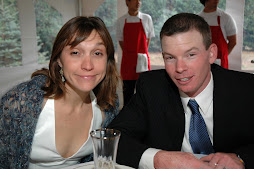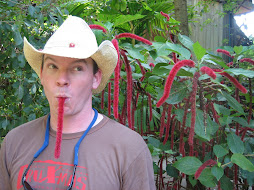The Multiple Intelligence Theory of Howard Gardner and it’s (mis)Applications for Wilderness Education
By Nate Furman, NOLS Instructor
Introduction
I’ve got a bone to pick. I’m not going to hide it, and I’m not going to try to eloquently talk around it. I’m going to address it head on, and this paper is the manifestation of my bone-picking. I don’t much like some of the discussion I’ve heard at NOLS recently, and in wilderness education in general, about trying to utilize the idea of “learning styles” in our curriculum delivery. What follows is a discussion of Gardner’s Multiple Intelligences (MI) Theory and corresponding learning styles. At the end of the paper, I’ll offer an alternative that I think is much more useful for NOLS and much more important to our students than attempting to teach to individual leaning styles.
Many people involved with wilderness education are familiar with MI theory and learning styles. The theory expresses that humans generally have eight different intelligences: linguistic, mathematical, spatial, kinesthetic, musical, interpersonal, intrapersonal, and naturalistic. Each of the intelligences, he contends, corresponds with a particular learning style. The implication is that each of us is differently talented in each of the eight domains and that each of us tends to learn best when information is presented in a way that corresponds with our intelligences. Fair enough.
Not surprisingly, the concept has garnered a substantial amount of attention. I will not deny that there is an intuitive attraction to a theory that says that educators need to consider their students as differently-abled, and to teach accordingly. There are schools that are founded on the premise, such as the New City School in St. Louis. Many curriculums have been developed around the idea and teachers have developed techniques to teach to different learning styles. Many parents have identified which intelligences their children are gifted in, and even children themselves often have an awareness of what their learning style is.
What does this mean for wilderness education? Well, mainly nothing.
This paper will explain why. There are primarily four reasons. First, the theory contends that we all have natural, separate intelligences, but this is largely incorrect. Second, the theory itself has very little empirical data to support it yet there are numerous studies that refute it. Third, it is highly impractical. Fourth, and most central to us, its primary application is the traditional classroom, and NOLS excels in a non-traditional classroom.
Separate Intelligences?
As noted before, MI theory contends that there are eight separate intelligences. This is largely a reaction to the idea that intelligence, as explained by the g-factor, is an inheritable trait that is resistant to change, and correlates with abilities to solve complex problems, marry models, have beautiful children, and die rich. The implication is that some lucky individuals are gifted at birth and that the rest of us end up wallowing around in the muck while working NOLS courses. An attractive alternative is to acknowledge that people are differently-abled and excel in different areas. Gardner took this path, and used the label “intelligence” to do so.
However, there are a number of difficulties with this stance. As it turns out, most of the eight intelligences are correlated with each other. That is, those of you who score high in a couple different intelligences are likely to score high in most of them—and score well on general intelligence tests to boot. This lends support to the idea that a high g factor is indeed the governing source of intellect and that the eight multiple intelligences are simply different parts of the g.
Empirical Evidence?
There are a good number of theories out there: the theory of gravity seems to work well, although rarely in our favor when we’re trying to send the sick new proj. Self-determination theory also works, stating (roughly) that when people have good relationships, have some control over their lives, and are good at what they do they’ll generally be happy and well-adjusted individuals. What these two theories have in common, and other useful theories, is a preponderance (yes, preponderance) of evidence to back them up, and very little that contests it.
If only this were the case with MI theory. Most of the evidence surrounding MI theory refutes it. Dr. Lynn Waterhouse, Professor Emeritus at the College of New Jersey adequately summarizes in Educational Psychologist:
To date there have been no published studies that offer evidence of the validity of the multiple intelligences. In 1994 Sternberg reported finding no empirical studies. In 2000 Allix reported finding no empirical validating studies, and at that time Gardner and Connell conceded that there was ‘little hard evidence for MI theory’ (2000, p. 292). In 2004 Sternberg and Grigerenko stated that there were no validating studies for multiple intelligences, and in 2004 Gardner asserted that he would be ‘delighted were such evidence to accrue’ (p. 214). (Waterhouse, 2006a, p. 208).
You’ll have to forgive me if I pulled that off of Wikipedia (I did—but at least I did pull up the primary sources afterwards), but when a Professor Emeritus does the research for me, who am I to think I could do better?
MI theory is not practical
Allrightythen, let’s do a scenario. Pretend you’re instructing a rock camp, and let’s say you have either a) the psychological training to assess the learning style of your students or, b) you administered a standardized test to them prior to leaving the field that told you which learning style each of your students are. What you found out is that all of them are musically intelligent. How are you going to teach them rappelling? “Alright, when I rap M.C. Hammer, you do a Munter rappel. When I sing Celine Dion, it’s a dulfersitz. Everyone got it?”
Okay, so it’s not a realistic scenario, but it illustrates the problem. Largely, NOLS instructors are untrained to accurately assess learning styles and we haven’t invented the techniques to teach with that consider them. It’s possible to tweak our curriculum to suit the needs of an individual student, but we already do that and more. I’ll explain how in a bit.
NOLS is Not a Traditional Classroom
You knew that one already, right? But that’s where Gardner’s theory is most applicable. Lets look at the reality of the traditional classroom: large class sizes, limited time, overwhelmed/underpaid teachers, pressure to have students succeed on standardized tests, dealing with disciplinarian issues on a daily basis, and not having much time to form meaningful relationships with students.
Now lets look at a NOLS classroom: we have really small classes and there are at least three instructors on each course. That’s a 4-1 ratio! We typically have plenty of time: if we need to teach more or revisit something, we can hike fewer miles that day. And if we really need to make those miles and it’s going to be a rough one for the students, then we’re teaching tolerance for adversity instead of VOEMPing. We aren’t really that overwhelmed very often. We’re still underpaid: the plight of the educator. We don’t have pressure to have students to do well on standardized tests, and rarely do we deal with disciplinarian issues the way a typical teacher does. We have oodles of time to get to know our students and frequently end up friending them on Facebook afterwards and exchanging YouTube videos. These are but a few of the differences between a NOLS classroom and a traditional classroom.
All of this means one thing: we have the opportunity to provide outstanding educational experiences for our students in a way* that regular teachers do not. I don’t need to know if one of my students has a naturalistic intelligence or a kinesthetic intelligence. There are certain educational principles that transcend learning styles: the ability to engage someone in a close-knit learning community, to look in eyes and be able to see if they understand. To plan and enact engaging learning experiences. To have plenty of time for questions and dialogue and reflection. To build rapport with students during a long day of sea kayaking or rounds of hot drinks. These things will go far further than trying to reach out to someone’s innate specific intelligence, especially considering these intelligences have never been shown to exist.
Alternative to Learning Styles
Because it’s a cruel thing to cast a stone and not proffer a different way, I’ll end with an alternative to learning styles. These aren’t things I came up with; they’re what outdoor educators have been doing since the time Socrates sat in an open square and posed a bothersome question, and probably before that. If you can do these things, you don’t need to worry about what learning styles your students present.
- Build rapport and trust.
- Create engaging and active learning experiences.
- Provide ample time for reflection.
- Invite questions.
- Engage in dialogue about curriculum.
- Provide time for practice.
- Meet students on their level, not the level you wished they were at.
- Offer opportunities for challenge.
- Support when needed.
- Invite fun.









No comments:
Post a Comment